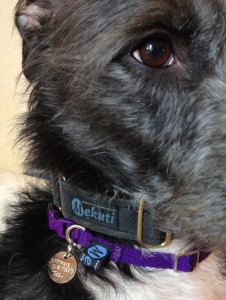 The smell of autumn is tickling our senses, as well as those of our dogs. Those who are fearful of the loud bangs know that Fireworks Season has returned. Dogs learn by association, so their anticipation will be rising – autumnal smells, the nights drawing in, the fire being lit or the heating being turned on. Having been through a tough time last year with your dog, your feelings will be rising too; I hear so much anger expressed about the public displays, and the general public having access to explosives (that’s another topic, and I promise to keep off my soapbox), because so many of our companions struggle at this time of year. This anger and frustration will be felt by them too, so if you are able to,
The smell of autumn is tickling our senses, as well as those of our dogs. Those who are fearful of the loud bangs know that Fireworks Season has returned. Dogs learn by association, so their anticipation will be rising – autumnal smells, the nights drawing in, the fire being lit or the heating being turned on. Having been through a tough time last year with your dog, your feelings will be rising too; I hear so much anger expressed about the public displays, and the general public having access to explosives (that’s another topic, and I promise to keep off my soapbox), because so many of our companions struggle at this time of year. This anger and frustration will be felt by them too, so if you are able to,
- Keep calm and focus on getting your animals comfortable.
As we cannot stop the fireworks, we need to find ways to keep our dogs (and cats) comfortable, calm and safe. There are actually several things we can do to support, calm and protect.
I will start with “protect”. Here are 7 things you can be getting on with now:-
- Call your dog(s) to you and check their collar(s). Are there any nicks in the webbing/leather or signs of wear? Is the ring damaged? If yes to either of these questions, consider replacing the collar. Tighten up the collar to ensure it’s harder to slip out of (not too tight – they still need to breathe and be comfortable, but not so loose that it can slide off over their ears).
- Equipment – check leads and harnesses as you did the collar. Any damage causes a weakness and damaged webbing can snap. Replace if necessary.
- Contact details. If your dog hasn’t got a ID tag, get one sorted TODAY! You can buy them online, from many pet stores, and key cutters will make one up cheaply too. Check that the attaching ring is strong and hasn’t been caught on anything which may have started to open it up. I have lost several this way (two last year from attaching the lead to it instead of the collar by mistake!).
- Buy a second, narrow collar for your dog, attach the dog tag to it and place this collar BELOW the one you attach the lead to. This will
ensure that if your dog panics and slips out of their main collar they at least will still have a form of ID.
- Microchip – if your dog has one, contact the company they are registered with and check that your details are up to date. It’s a brilliant system, but you can only be found if your address and telephone number are correct. Make it easy for the wardens, vets and rescue centres. If you are unsure of the number, your vet surgery will be happy to scan your dog and give it to you and tell you the name of the company whose chip it is. Many independent rescue centres have a chip registered to them – it’s always worth checking that the rescue is still operating. If your dog DOESN’T have a microchip, book them in and get one done. Most rehoming centres do them, and all vets.
- Consider a harness and a double-ended lead; attach one end of the lead to the harness, and the other to the collar. This is double-bubble, and should ensure that if they do bolt and slip out of one, you will be able to hold them with the other. We (obviously) use the Mekuti Balance Harness as it’s been tested on those notorious escapologists – sighthounds – and, when it’s adjusted correctly, is very difficult to reverse out of.
- Garden – check your fence/perimeter for any holes (either in it or underneath), or places where your dog can climb onto something like a table, bench, or stump, to give them a boost over the top. Move what you can away from the edges (stumps are tricky); dogs can be pretty inventive when they have to be (trying to get the image of a pole-vaulting dog out of my head). My advice is only allow your dog to be loose in the garden in the daytime, and away from dusk. The rest of the time have them on lead, or on a long line if they need space. Whilst checking the garden, look at the latches on your gates to ensure it cannot accidentally be left open. Always latch it behind you and check it’s closed.
The above may seem like minor things to be doing, but they are aimed at reducing the likelihood of your dog escaping from you, but, if they do, increase the likelihood that they will be returned home. There are too many dogs in rescue who are microchipped but their details are out of date so their distraught owners cannot be traced. Don’t be one of them. A small investment of time can make all the difference. A terrified dog can run a very long way and take themselves out of their usual territory making it hard to find their way back – they cannot think in this state as everything is reaction / adrenalin and the brain is unable to take in the details of where they have travelled.
This weekend, sort out ID, microchip details, collars, leads and harnesses, then into your garden for a quick check.
My next post will cover what you can do to help your dog to feel more relaxed when the fireworks are actually going off.
Rachael


Pingback: Firework Fright & Dogs Information | The Mekuti Way